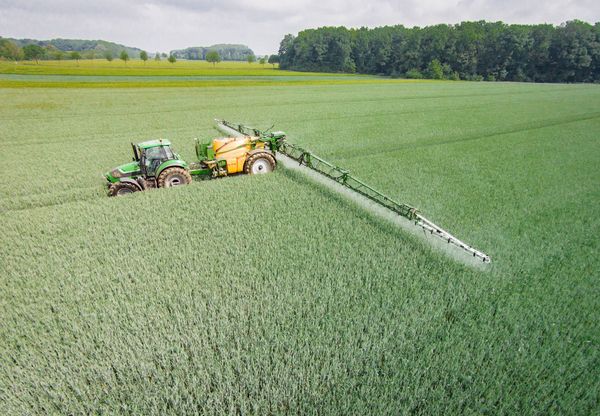Expertise
Reducing pesticides: How and at what cost?
Marcel Dehler, Thomas de Witte | 27.04.2023
Using the example of a model arable farm in the soil-climate region "Südhannover", we estimated how farmers typically proceed when the use of chemical plant protection products is to be reduced, and how high their adaptation costs are.

Pesticides are an important part of conventional agriculture in Germany. They have helped to increase land productivity and reduce yield losses - thereby making a significant contribution to food security. On the other hand, plant protection products have a negative impact on biodiversity, and their degradation products can be found in ground and surface waters. Therefore, the policy wants to reduce the use of plant protection products and the associated risks at European level by 50 % by 2030. Against this backdrop, the Thünen Institute of farm economics has investigated in a project the question of how the risks can be measured and at what cost they can be reduced.
How to measure?
There are many different indicators that can be used to measure the use of plant protection products. Quantity indicators have the advantage that they are comparatively easy to measure. However, risk indicators are considered more suitable for reducing environmental risks and promoting biodiversity. Within the group of risk indicators, there are various approaches: One of these indicators is the Pesticide Load Indicator (PLI) from Denmark. Here, active substances are evaluated very transparently on the basis of their active substance properties in the areas of environmental behaviour and environmental and human toxicity. For this purpose, the potential risks of active substances are determined with the help of various sub-indicators and proxy organisms.
How do farms adapt?
Analyses based on a typical model farm in the soil-climate region "Südhannover" show the following adaptation behaviour of farmers: In order to reduce the PLI by 25 % from the status quo, farmers will first replace more toxic active substances with those with a lower PLI. Similarly, weeds are increasingly regulated mechanically; mechanical soil cultivation also takes the place of total herbicides before summer crops. If no crop-specific PLI reduction is required and alternative crops are available, farmers will take crops with a low Net Margin per PLI unit used out of the cultivation programme and instead cultivate crops with a more favourable ratio (such as grain maize instead of rape). If the PLI is halved, reduced fungicide and insecticide use across crops or later sowing dates in cereals are also suitable for reducing the risks from plant protection products.
What adaptation costs result from this?
The adaptation costs depend strongly on the political implementation of the reduction targets and the resulting flexibility of the farmers. In principle, it has been shown that the greater the flexibility for farmers, the lower the adaptation costs:
For a crop-specific PLI reduction of 25 %, changes in the Net Margin of + 25 €/ha for sugar beet to - 60 €/ha for stubble wheat (at a wheat price of 175 €/t) can be expected for the typical model farm. If the PLI has to be reduced by 50 % for each individual crop, the range of adjustment costs between the crops increases further. While the PLI can be halved for rapeseed with costs of around 50 €/ha, the Net Margin for stubble wheat or winter wheat after silage maize falls by around 150 €/ha.
However, if the savings only have to be realised at farm level, adjustment costs between about 10 and 20 €/ha can be expected (see figure 1). Production, expressed here in terms of change in grain units produced (GU), varies between +4 to a maximum of -5 %. With a PLI reduction of 50 %, the adjustment costs increase disproportionately strongly, so that an operational Net Margin decline of between about 80 and 125 €/ha can be expected. The decline in production is also more significant, with a reduction in GU produced of between 0 and 7 %. This does not take into account extreme years (e.g. as a result of a high incidence of pests), in which the costs can rise to up to 175 €/ha.
More detailed information can be found in Thünen Report 104 (in German with English summary).






